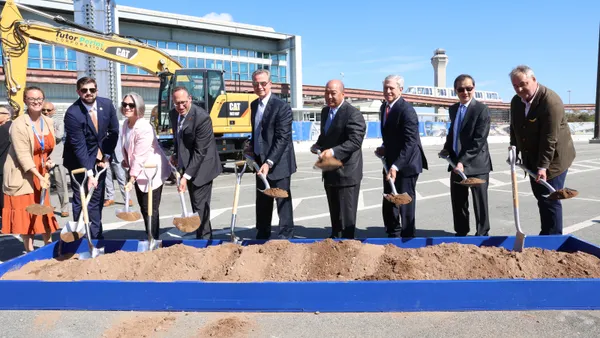Dive Brief:
-
The Pennsylvania Department of Transportation has awarded Jacobs Engineering Group a 10-year, multimillion dollar contract to design an active traffic management (ATM) system for Interstate 76 through Philadelphia, according to Traffic Technology Today.
-
Jacobs' services for the Schuylkill Expressway will include preliminary and system engineering, design, analysis of alternatives, right-of-way acquisition and construction consultancy.
- The final ATM system could include occasional use of the shoulder, connected vehicle technology, variable speed limit signage and traffic jam detection and alerts. PennDOT could also implement features like ramp metering, junction control, dynamic lane assignments, and multimodal strategies in tandem with shoulder use.
Dive Insight:
Many states facing increased traffic on their highways are turning to technology to help ease the burden of maintenance and monitoring.
The Minnesota Department of Transportation announced in March that it was studying vibration data collected from an interstate bridge to create a structural-failure alert system. The state has employed 500 sensors and has been capturing data on how the bridge concrete reacts to traffic, wind and temperature changes since 2008.
Georgia is testing road sensors, electric and autonomous vehicle technology and pavement with solar panels along a stretch of Interstate 85. The Georgia Department of Transportation, in its attempt to create a "zero-carbon, zero-death, zero-waste, zero-impact" highway, will also use drones to collect test data.
The Rhode Island Department of Transportation is also investigating the use of connected/autonomous vehicle technology as a way to update its highway systems. It issued a request for information earlier this month in an attempt to find a company to work with on the initiative.
And in April, the Maryland Department of Transportation awarded a $100 million contract to a 16-member design-build team to come up with ways to improve traffic flow and ease congestion on Interstate 270 between Interstate 495 and Frederick, MD — just outside Washington, DC. The state expects to use technology to give motorists real-time traffic information in its quest to cut average travel time by 30 minutes.











